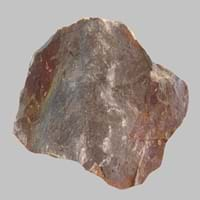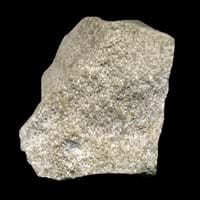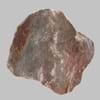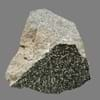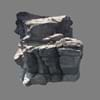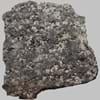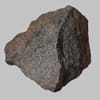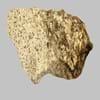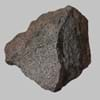Definition
Hawaiite is volcanic rock that resembles basalt. It is an olivine basalt with intermediate composition between alkali olivine and mugearite
Oolite is a sedimentary rock formed from ooids, spherical grains which are composed of concentric layers of calcite
Origin
Hawaii Islands
Unknown
Discoverer
Joseph Iddings
Unknown
Etymology
From Hawaii Islands
From oo- + -lite, after German Oolit. A rock consisting of fine grains of carbonate of lime
Class
Igneous Rocks
Sedimentary Rocks
Sub-Class
Durable Rock, Medium Hardness Rock
Durable Rock, Medium Hardness Rock
Other Categories
Opaque Rock
Fine Grained Rock, Opaque Rock
Texture
Glassy, Massive, Porphyritic, Scoriaceous, Vesicular
Clastic or Non-Clastic
Color
Black, Brown, Light to Dark Grey
Black, Blue, Brown, Cream, Green, Grey, Pink, Red, Silver, White, Yellow
Durability
Durable
Durable
Scratch Resistant
Yes
Yes
Appearance
Dull and Soft
Rounded and Rough
Interior Uses
Decorative Aggregates, Floor Tiles, Flooring, Homes, Hotels, Interior Decoration, Kitchens
Decorative Aggregates, Flooring, Interior Decoration
Exterior Uses
As Building Stone, As Facing Stone, Paving Stone, Garden Decoration, Office Buildings
As Building Stone, As Facing Stone, Garden Decoration, Paving Stone
Other Architectural Uses
Curbing
Not Yet Used
Construction Industry
As Dimension Stone, Cobblestones, Rail Track Ballast, Roadstone
Cement Manufacture, Cobblestones, Landscaping
Medical Industry
Not Yet Used
Not Yet Used
Antiquity Uses
Artifacts
Artifacts
Commercial Uses
Creating Artwork, Sea Defence
Creating Artwork, Jewelry, Used in aquariums
Types
Not Available
Not Available
Features
Has High structural resistance against erosion and climate, Very fine grained rock
Available in lots of colors, Generally rough to touch, Very fine grained rock
Archaeological Significance
Monuments
Used
Not Yet Used
Famous Monuments
Easter Island in the Polynesian Triangle, Pacific Ocean
Not Applicable
Sculpture
Not Yet Used
Not Yet Used
Famous Sculptures
Not Applicable
Not Applicable
Figurines
Not Yet Used
Not Yet Used
Formation
Hawaiite is a fine-grained, hard rock that forms when bits of lava shoot out of volcanoes and reach the Earth's surface.
Oolites form when layers of calcite are deposited around a sand grain or fossil piece and are rolled around in calm water, which makes them round.
Mineral Content
Olivine, Plagioclase, Pyroxene
Calcite, Chert, Clay, Dolomite, Quartz, Sand, Silt
Compound Content
Aluminium Oxide, CaO, Iron(III) Oxide, FeO, Potassium Oxide, MgO, MnO, Sodium Oxide, Phosphorus Pentoxide, Silicon Dioxide, Titanium Dioxide
Aluminium Oxide, Ca, NaCl, CaO, Iron(III) Oxide, FeO, MgO
Types of Metamorphism
Impact Metamorphism
Not Applicable
Types of Weathering
Biological Weathering
Biological Weathering, Chemical Weathering, Mechanical Weathering
Types of Erosion
Not Applicable
Chemical Erosion, Coastal Erosion
Grain Size
Not Applicable
Fine Grained
Fracture
Conchoidal
Conchoidal
Streak
Not Available
White
Porosity
Less Porous
Less Porous
Luster
Not Available
Pearly to Shiny
Compressive Strength
Not Available
Cleavage
Not Applicable
Non-Existent
Toughness
Not Available
1
Specific Gravity
Not Available
Not Available
Transparency
Opaque
Opaque
Density
Not Available
Not Available
Resistance
Heat Resistant, Pressure Resistant, Wear Resistant
Heat Resistant, Wear Resistant
Deposits in Eastern Continents
Asia
India, Russia
Brunei, India, Indonesia, Malaysia, Singapore, Thailand, Vietnam
Africa
South Africa
Cameroon, Chad, Ghana, Kenya, Malawi, Sudan, Tanzania, Togo, Zambia, Zimbabwe
Europe
Iceland
United Kingdom
Others
Hawaii Islands
Not Yet Found
Deposits in Western Continents
North America
Canada, USA
USA
South America
Brazil
Colombia
Deposits in Oceania Continent
Australia
Not Yet Found
Adelaide, New Zealand, Queensland, Tonga, Victoria, Yorke Peninsula
All about Hawaiite and Oolite Properties
Know all about Hawaiite and Oolite properties here. All properties of rocks are important as they define the type of rock and its application. Hawaiite belongs to Igneous Rocks while Oolite belongs to Sedimentary Rocks.Texture of Hawaiite is Glassy, Massive, Porphyritic, Scoriaceous, Vesicular whereas that of Oolite is Clastic or Non-Clastic. Hawaiite appears Dull and Soft and Oolite appears Rounded and Rough. The luster of Hawaiite is not available while that of Oolite is pearly to shiny. Hawaiite is available in black, brown, light to dark grey colors whereas Oolite is available in black, blue, brown, cream, green, grey, pink, red, silver, white, yellow colors. The commercial uses of Hawaiite are creating artwork, sea defence and that of Oolite are creating artwork, jewelry, used in aquariums.
